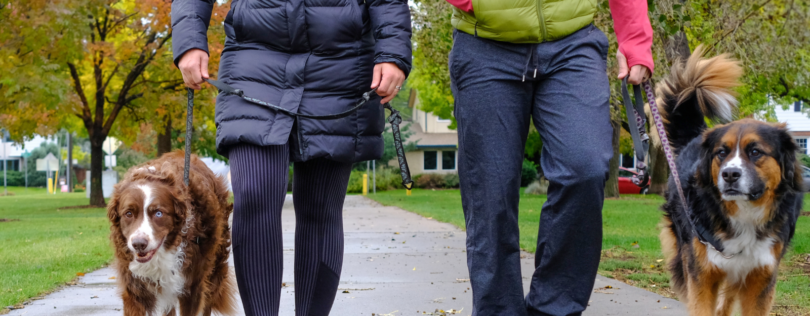In today’s episode of the Paws & Reward Podcast I have the pleasure of not only interviewing the lovely Juliana Willems but also talking about one of my favorite topics: being an advocate for your dog!
We started off the episode by defining what we mean by being your dog’s advocate. Juliana says, “For me, being an advocate for your dog means making sure they are not put in situations beyond their ability to cope. This may include intervening — both verbally and sometimes physically — to prevent a situation from happening that you know will be stressful for your dog.
Being an advocate for your dog could also be making changes to the environment to help your dog feel more comfortable. It could also be putting your dog’s needs above someone else’s. This may include a stranger on the street who wants to say hi, a family member who is not giving your dog enough space, or a veterinarian who needs to get a procedure done.”
So is being an advocate for your dog easy or hard?!?
We discuss this a LOT in the episode and both determine that it feels easier for us to be a good advocate for our dogs when the risks are high and we’re trying to prevent a very poor interaction from taking place. We both share situations where it can be easy for us to be advocates and other situations where it can feel more challenging.
The good news is, the more your practice being an advocate for your dog, the easier it becomes (even in situations that are not high risk).
Things to consider to get better at being an advocate for your dog:
Determine the contexts in which you need to be your dog’s advocate.
A few examples include when you can anticipate your dog will react poorly, on-leash greetings with people or dogs, or specific interactions with friends and family.
Make sure to get fluent in your dog’s body language and be mindful of subtle stress in addition to obvious stress signals.
Just because a dog is not barking and growling doesn’t mean they are feeling good about a situation. We encourage you to work on being an advocate for your dog preventatively so your dog does not feel the need to escalate to barking and growling.
Great dog body language resources:
- Doggie Language: A Dog Lover’s Guide to Understanding Your Best Friend by Lili Chin
- Canine Behavior: A Photo Illustrated Handbook by Barbara Handelman
- Understanding Dog Body Language PART 1
- Understanding Dog Body Language PART 2
- www.ispeakdog.org
- www.silentconversations.com
- www.dogdecoder.com
You can also read my dog training blog post all about dog body language.
Determine who is present when you have to be your dog’s advocate.
Ask yourself what you might need to say or do to see a better outcome for everyone involved. Notice which audiences are harder to ask for what you need and try practicing making these requests in situations that feel less threatening first to develop fluency in this behavior.
For example, you might practice being an advocate for your dog with strangers on the street if you are not concerned about that audience. You might practice in the mirror to yourself. Or you might practice with a trusted friend or family member. Remember that your reaction might need to change based on the audience and the context.
And remember – just because you ask does not mean the other party will listen. Make sure to note what behavior(s) you might need to do to co-create a positive outcome.

What Being An Advocate for Your Dog Looks Like in Action
Being an advocate for your dog will look different depending on the situation and the audience. But Juliana shared some great examples of advocacy in action during our podcast episode.
When engaging with strangers on the trail or out walking your dog, for example, there are a few great tips to say and do to help communicate what you need.
Avoid telling them your dog is shy or nervous or doesn’t get along with other dogs. Instead, try these techniques:
- Step off the trail and start training to cue that you’re not interested in engaging.
- Keep your comments short and sweet if they ask to engage. For example, say “No thanks” or “We’re in training”.
- You could also use your body to block the approach or use the environment (cars, trees) to step out of sight.
- And, lastly, you can use communicative collars, leashes, and badges!
Learn More About Being an Advocate For Your Dog:
Want to learn even more about advocating for your dog? Start by connecting with Juliana online and learning more about her work. You can find her at:
Explore these other podcast episodes and expert articles from Paws and Reward to help build your advocacy skills:
- Podcast Episode #4: Nonviolent Communication with Dogs
- Podcast Episode #9: Living with Difficult Dogs
- Podcast Episode #32: Building Canine Resilience

